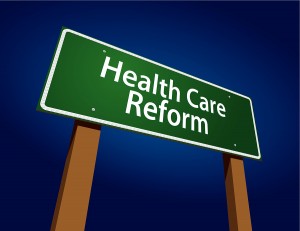Health Insurance Exchanges: Creating New Markets
Mar 1st, 2013
 The Obama Administration’s Affordable Care Act aims to help millions of uninsured people get private health plans by establishing health insurance exchanges. These “exchanges” or marketplaces are the centerpiece of the new law and will change the way people purchase health coverage. Open enrollment starts Oct. 1, 2013.
The Obama Administration’s Affordable Care Act aims to help millions of uninsured people get private health plans by establishing health insurance exchanges. These “exchanges” or marketplaces are the centerpiece of the new law and will change the way people purchase health coverage. Open enrollment starts Oct. 1, 2013.
Each state will have its health insurance exchange or “HIX” where people can directly purchase their plans via mail, phone, an online shopping center, or a physical store. Coverage for the plans sold begins Jan. 1, 2014.
The state, the federal government, or partnerships will operate these exchanges. Most Republican governors are critical of the new law and are letting Washington run the exchanges in their states. Consumers will have the same benefits regardless of who’s running the exchange.
Exchanges will create an even and equal playing field for health insurance providers and health insurance companies, giving consumers more control over their decisions. Officials hope the exchanges will be like Travelocity or Amazon for the health insurance market.
Middle-class people looking for coverage can choose from a range of private health insurance plans available and people will see if any government assistance is available to them.
Low-income people will be guided to safety-net programs they can sign up for. For states that choose not to expand their Medicaid coverage, this could be a problem. If that happens, some low-income residents might not be able to afford coverage and remain uninsured.
Most health plans sold through the exchanges must offer a comprehensive set of benefits. The new law identifies ten “essential health benefits” which must be included (but not limited to) in each plan:
• ambulatory patient services;
• emergency services;
• hospitalization;
• maternity and newborn care;
• mental health and substance use disorder services, including behavioral health treatment;
• prescription drugs;
• rehabilitative and habilitative services and devices;
• laboratory services;
• preventive and wellness and chronic disease management; and
• pediatric services, including oral and vision care.
Premiums may be higher for some people, but government assistance is available to address that issue.
The law has set a uniform set of guidelines for all plans offered through the exchanges: insurers cannot deny sick people coverage or charge them extra, middle-aged and older adults cannot be charged more than three times than what younger people pay, and insurers can charge more for those who smoke.
For more information, visit the Health Insurance Exchange guide.
Related posts from our blog:
No related posts.